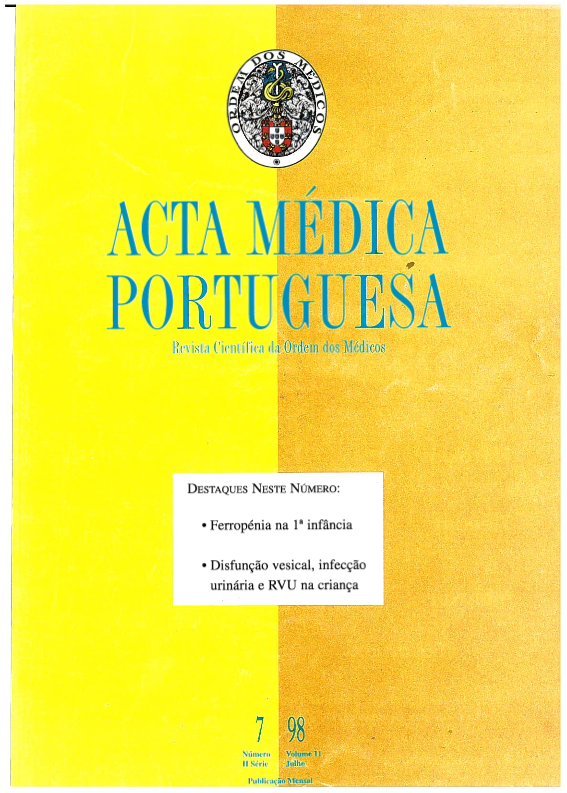Importance of J. Brazy's neurobiological index. Prediction of the number and severity of complications in very low birth weight infants.
DOI:
https://doi.org/10.20344/amp.2309Abstract
The objective of this study was to evaluate the neurodevelopment outcome of Very-Low-Birth-Weight Infants (VLBW), between 1987 and 1993, and correlate these findings with J.Brazy's Neurobiologic Risk Score (NBRS). The minimum corrected age at follow-up was 12 months. The neurodevelopmental assessment was performed using Mary Sheridan and Ruth Griffiths scales, Auditory and Visual Brainstem Evoked Responses and Stycar test. The NBRS was applied to 77 children. According to the score, three groups of risk were defined: Low < or = 4; Intermediate 5-7; High > or = 8. We obtained the following results: children with NBRS < 4, 20% had handicaps (5% of which major); children with NBRS 5-7, 41% had handicaps (23% of which major); in children with NBRS > 8, 95% had handicaps (80% of which major). The incidence of handicaps, (all grades included) was 71.4% for those weighing less than 1000 gr at birth, and 39.2% for those weighing 1000-1499 gr at birth. Major handicaps, mainly motor deficits, occurred in 26.8% of VLBW infants and minor to moderate handicaps were observed in 18.3% of patients in this group. These results were compared to J.Brazy's originals. We concluded that the NBRS, which is simple and objective to perform, is a good predictor of subsquent abnormal development in VLBW infants, allowing the infant's integration as soon as possible in high-risk follow-up programs, to place as soon as possible.Downloads
Downloads
How to Cite
Issue
Section
License
All the articles published in the AMP are open access and comply with the requirements of funding agencies or academic institutions. The AMP is governed by the terms of the Creative Commons ‘Attribution – Non-Commercial Use - (CC-BY-NC)’ license, regarding the use by third parties.
It is the author’s responsibility to obtain approval for the reproduction of figures, tables, etc. from other publications.
Upon acceptance of an article for publication, the authors will be asked to complete the ICMJE “Copyright Liability and Copyright Sharing Statement “(http://www.actamedicaportuguesa.com/info/AMP-NormasPublicacao.pdf) and the “Declaration of Potential Conflicts of Interest” (http:// www.icmje.org/conflicts-of-interest). An e-mail will be sent to the corresponding author to acknowledge receipt of the manuscript.
After publication, the authors are authorised to make their articles available in repositories of their institutions of origin, as long as they always mention where they were published and according to the Creative Commons license.









